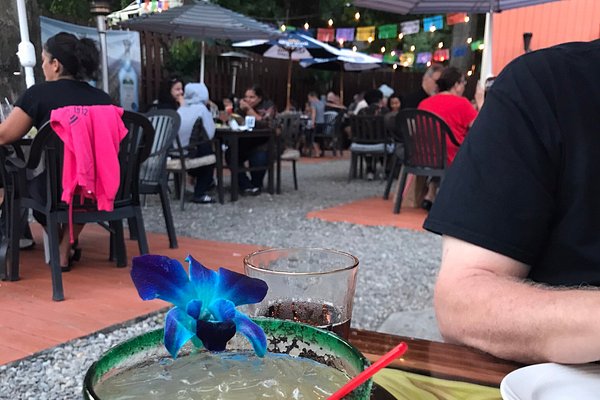Discover under-the-radar restaurants at local restaurants Lockhart.
Discover under-the-radar restaurants at local restaurants Lockhart.
Blog Article
Why Eating at Local Restaurants Supports Your Neighborhood and Thrills Your Preference Buds
Eating at regional restaurants supplies even more than simply a meal; it serves as an important part in supporting area vitality and financial resilience. What might this imply for the future of regional eating and community link?
Financial Impact of Regional Dining

The economic influence of regional dining prolongs far beyond the restaurant itself, affecting a vast array of industries within the community. Local dining establishments play a critical function in stimulating economic development by producing work, sustaining neighborhood distributors, and adding to metropolitan revenues. When consumers choose to dine at local facilities, they aid endure work for chefs, servers, and maintenance staff, thus enhancing the neighborhood work market.
In addition, neighborhood dining establishments usually resource active ingredients from close-by farms and producers, fostering a durable supply chain that benefits numerous farming markets. This method not only sustains regional economic climates but additionally motivates sustainable farming methods. Additionally, the sales tax generated from these dining establishments adds to essential civil services, such as education and infrastructure, which better improves neighborhood quality of life.
Furthermore, regional dining facilities frequently foster a sense of area, drawing in homeowners and visitors alike, which can bring about boosted foot traffic in surrounding businesses. This interconnectivity amongst regional ventures improves financial resilience, producing a dynamic and lasting community ecological community. Essentially, the assistance of local eating is an investment in the wider financial health of the location, promoting development and sustainability for future generations.
Unique Culinary Experiences
:max_bytes(150000):strip_icc()/68ab14_944f9f7baf264e35bbf248a73f33cd92mv2-e31ed149670045ac9224fa66446d8dbd.jpg)
In addition, lots of neighborhood establishments embrace farm-to-table practices, highlighting the importance of seasonal produce. Restaurants can savor the freshness of components sourced from nearby ranches, which not only improves taste but likewise promotes a connection to the regional landscape. This dedication to quality and area establishes the stage for distinct culinary experiences that are frequently missing in chain dining establishments.
In addition, neighborhood chefs frequently experiment with fusion cuisine, mixing diverse cooking customs to create amazing brand-new dishes. Such advancement not only entices the taste yet likewise urges adventurous eating, welcoming clients to expand their culinary horizons. Involving with regional dining establishments permits restaurants to delight in meals that are not simply about nourishment, but about the virtuosity and enthusiasm that specify the culinary globe, making every eating experience absolutely special and fascinating.
Strengthening Community Bonds
Eating at neighborhood restaurants plays a critical role in reinforcing area bonds by promoting links amongst locals. These establishments function as crucial gathering places where people can participate in purposeful conversations, share experiences, and develop lasting memories. As patrons regular the same neighborhood areas, they grow a feeling of experience and camaraderie, strengthening social ties within the area.
Furthermore, neighborhood restaurants usually show the unique cultural fabric of their neighborhoods, showcasing regional practices and culinary heritage. This event of local culture not just boosts community identification but likewise urges citizens to take pride in their surroundings. By taking part in the regional dining scene, individuals add to a common my company narrative that binds them together.
Area events hosted at dining establishments, such as open mic nights, charity events, or food celebrations, further improve these links. They provide chances for cooperation and interaction among diverse groups, promoting inclusivity and understanding. As homeowners gather to sustain local services, they at the same time support one an additional, developing an interconnected network that enhances the area's strength.
Basically, dining at local dining establishments is not simply concerning food; it is an enhancing experience that strengthens area bonds and grows a lively, united local culture.
Supporting Local Farmers and Producers
This practice decreases transportation expenses and discharges, promoting environmental sustainability while likewise boosting the taste and top quality of the recipes offered. Seasonal menus, which highlight neighborhood fruit and vegetables, permit dining establishments to offer distinct cooking experiences that reflect the area's farming click site bounty.
Furthermore, supporting local farmers assists protect standard farming practices and motivates biodiversity. It encourages small producers, enabling them to grow in a progressively industrialized food system. As local restaurants pick to partner with these farmers, they help maintain a vibrant agricultural area, ensuring that regional food systems stay durable.
Basically, dining at neighborhood restaurants is not simply concerning enjoying a dish; it is a financial investment in the regional economic situation and an affirmation of lasting methods. By choosing neighborhood, diners play an essential duty in supporting their neighborhoods and supporting the hardworking individuals who grow their food.
Protecting Local Society and Heritage
Rooted in the customs of their neighborhoods, neighborhood restaurants work as essential custodians of cultural heritage. By showcasing regional active ingredients and standard food preparation methods, these facilities preserve the distinctive flavors and cooking methods that define regional identity. Each recipe tells a story, showing historical impacts and cultural narratives that have actually formed the community over generations.
Moreover, regional restaurants usually promote time-honored dishes passed down with families, making certain that distinct social methods continue to be to life. This not just educates customers about the area's heritage but additionally fosters a sense of satisfaction and belonging among homeowners. The atmosphere, decor, and even songs in these facilities typically resemble the local culture, supplying a holistic experience that transcends mere dining.
Furthermore, neighborhood restaurants contribute to the conservation of language and languages, as menus and discussions often integrate regional vernacular. By joining community occasions and parties, these restaurants strengthen social bonds and promote cultural exchange. Basically, eating at local restaurants is not simply a culinary experience; it is a chance to this contact form involve with and sustain the abundant tapestry of regional society and heritage, ensuring its connection for future generations.
Conclusion

Report this page